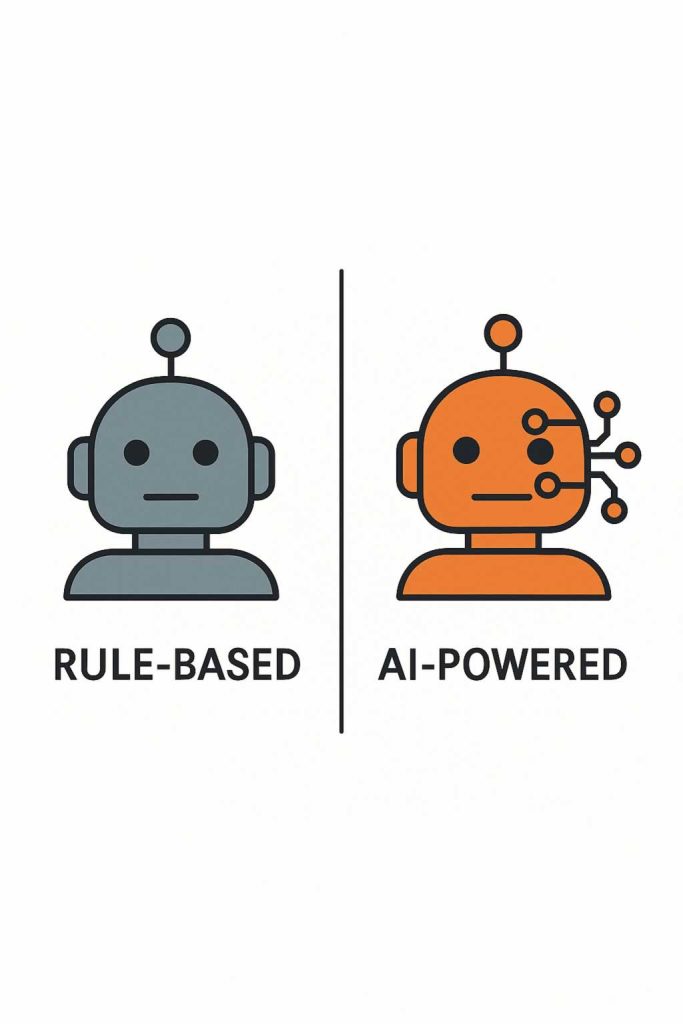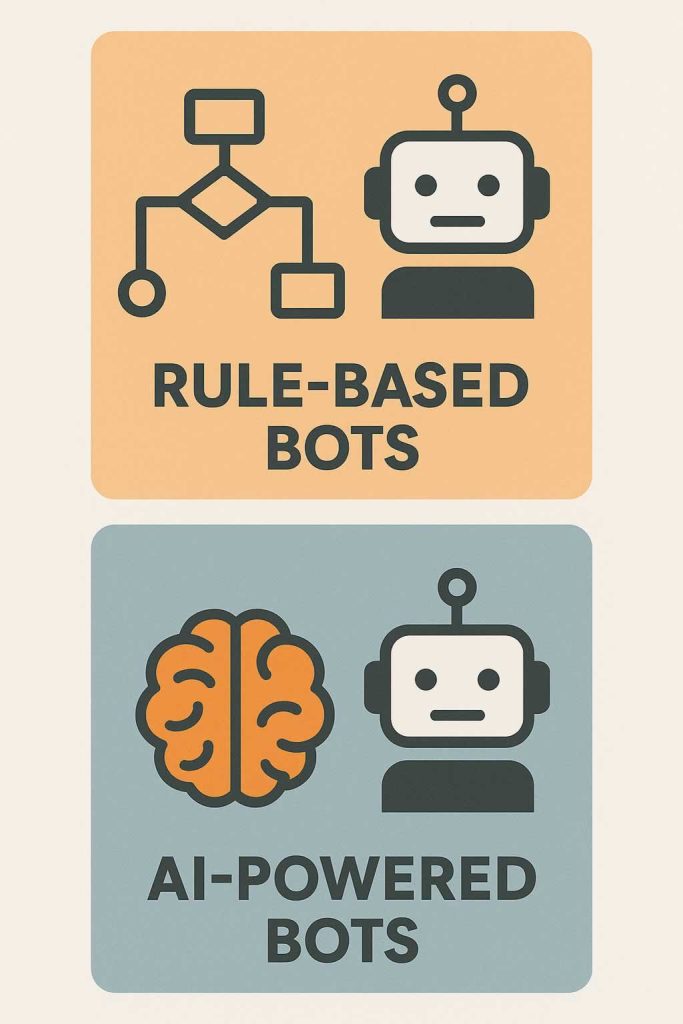

The difference between rule-based and AI-powered bots comes down to how they understand and respond to users. At AEHEA, we build both types depending on the complexity of the task, the need for flexibility, and the environment where the bot will be used. Each approach has its advantages, but they serve very different roles in business automation and communication.
Rule-based bots follow strict, predefined instructions. They respond to keywords, menu selections, or specific input patterns. If a user types something the bot doesn’t recognize, it usually fails or redirects to a fallback. These bots are ideal for simple tasks like booking an appointment, answering a limited set of FAQs, or filling out a form. They are predictable, easy to test, and don’t require advanced processing or training. However, they struggle when conversations go off-script or when the user phrases something in an unexpected way.
AI-powered bots, on the other hand, use machine learning and natural language understanding to interpret user intent. They don’t rely on exact keyword matches. Instead, they learn from examples, recognize variations in language, and respond with more flexibility. AI bots can handle ambiguous questions, follow multi-turn conversations, and even generate dynamic replies. They are especially useful in support, sales, onboarding, and any environment where the user’s input is unpredictable or open-ended.
At AEHEA, we often combine both systems. We use rule-based flows to guide users through structured decisions, and AI layers to handle free-form input or fallback situations. This hybrid design allows for better control without sacrificing the benefits of intelligent conversation. Rule-based bots are great for precision. AI-powered bots are built for adaptability. The key is matching the technology to the task, not forcing one method where it doesn’t belong.
